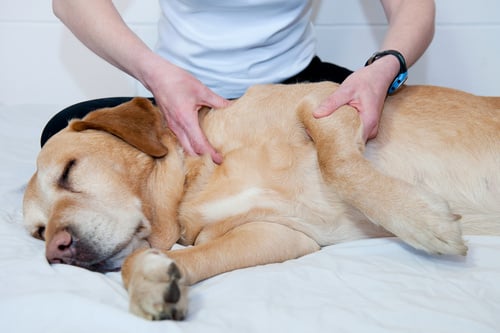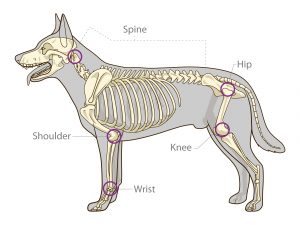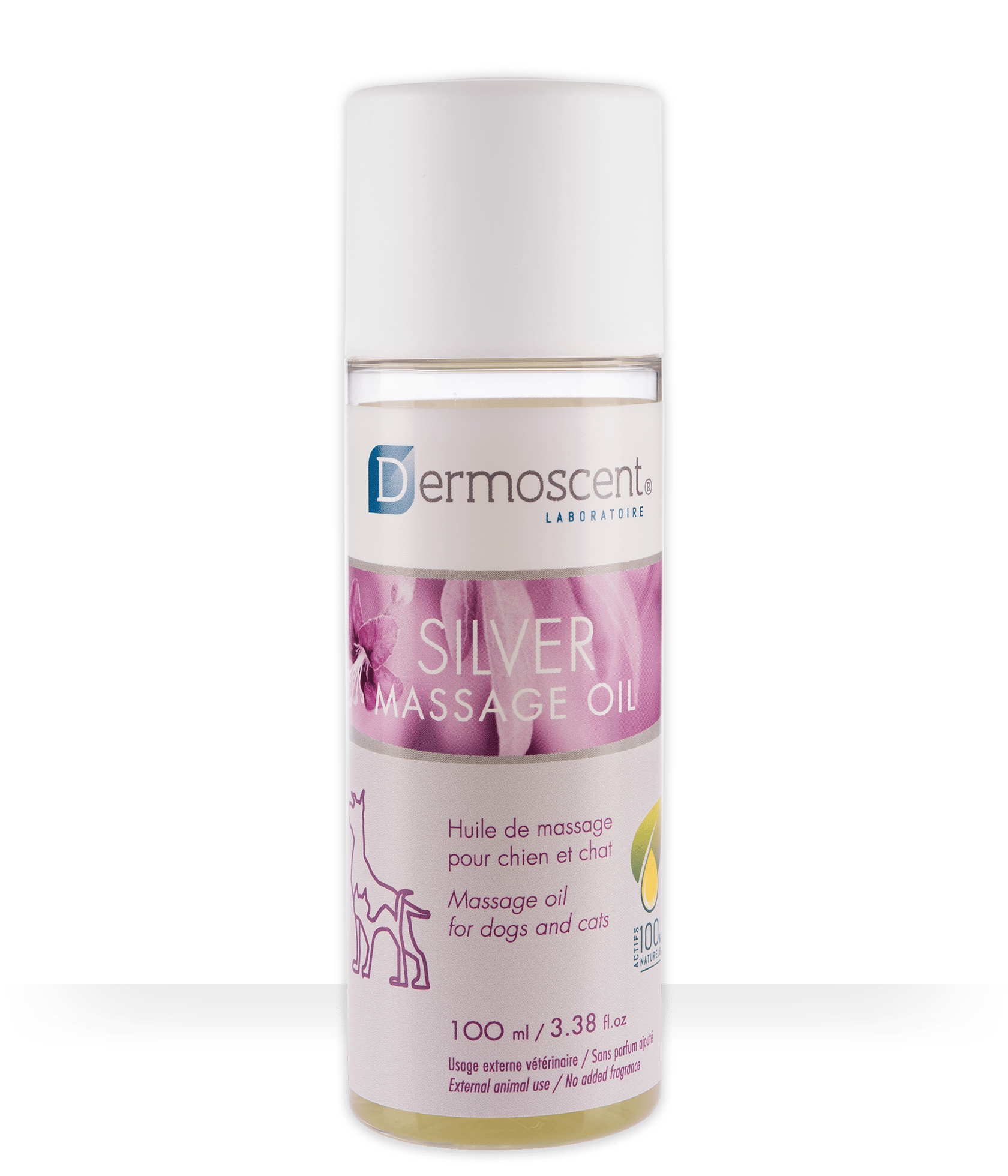Osteoarthritis in dogs and cats

Osteoarthritis is a chronic and degenerative disease resulting from wear and tear of joint cartilage which can affect several body parts: hips, knees, shoulders, elbows…

Background
The cartilage which surrounds bones at the joints deteriorates naturally with age, in a progressive and irreversible manner (primary osteoarthritis). Certain factors can accelerate the process (secondary osteoarthritis):
- birth defects causing joint malfunction such as hip dysplasia in large dogs or kneecap dislocation in small dog breeds
- trauma
- excess weight increases the risk and the aging of joints
What are the signs?
A reduction in activity can be observed: dogs might have difficulties getting up from their basket, may lack enthusiasm for a walk… Then, stiffness appears (difficulties in lifting their leg to urinate, for example) along with muscle loss, limping and yelping in pain upon certain movements. In the case of an acute osteoarthritis outbreak (linked to temperature variation/humidity, intense physical exertion…), dogs may lick their joints, show aggressiveness (a demonstration of pain) and a complete immobility of the joint (ankylosis) may even occur.
Although all breeds may be affected by osteoarthritis, large dogs are often predisposed due to congenital defects of the hips or elbows: Labrador, Rottweiler, German Shepherd…
Cats will spend more time lying down, will have difficulties in self-grooming or jumping on furniture or cat tree. Certain breeds are also predisposed to joint defects (Maine Coon and Abyssinian).
What can be done?
Prevention
Early diagnosis is essential. For older animals, an annual geriatric check-up by your vet is advised from:
- 10-11 years for small cats and dogs
- 9 years for medium-sized dogs
- 7 years for large dogs
Joint defects should be monitored among predisposed breeds.
Nutrition, exercise
The use of chondroprotective agents, in the form of food supplements or integrated in the food, gives good long-term results to limit cartilage deterioration.
In any case, the weight control of the animal is crucial.
Regular yet moderate physical activities are recommended.
Physiotherapy
Hydrotherapy and laser therapy are increasingly used but require regular sessions.
Massage can provide pain relief.
Osteopathy and electrotherapy are complementary treatments which can help bring relief to certain animals.
Medical/surgical treatment
Depending upon the stage of osteoarthritis, your vet may prescribe a suitable anti-inflammatory treatment (acute outbreak).
In the most severe cases, surgery may be necessary.
Dr Vanessa Marmolejo, veterinarian

